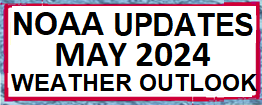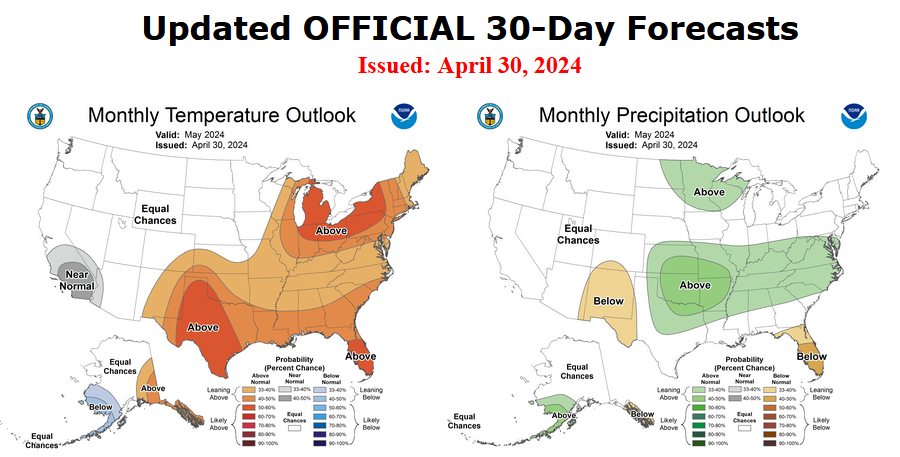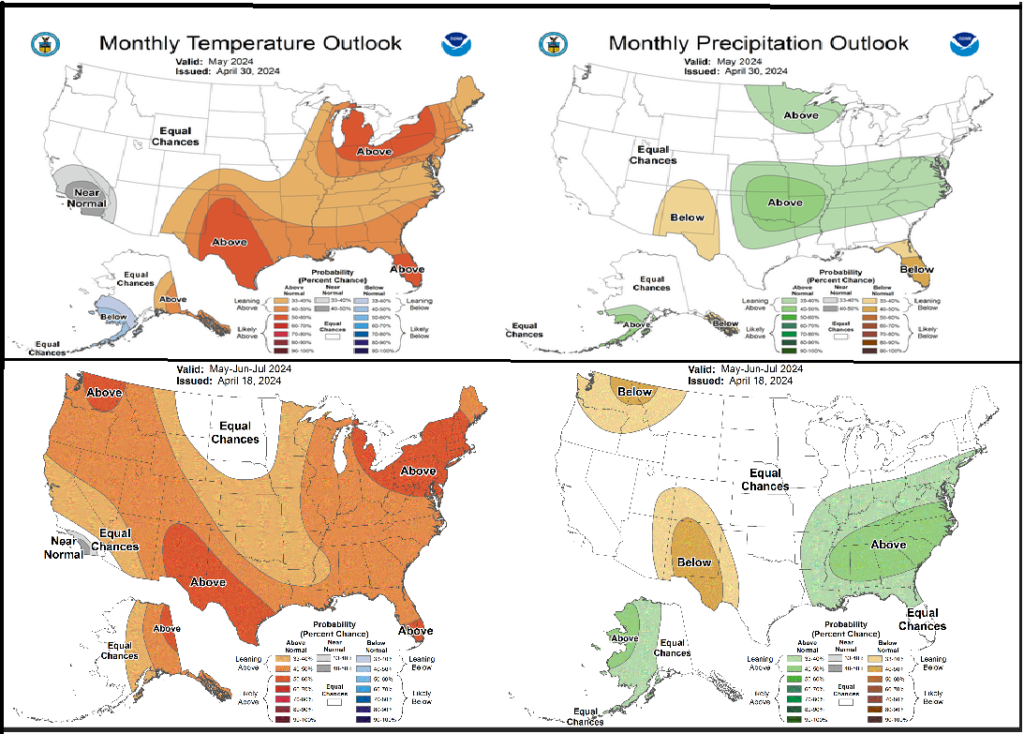Today Through the Fourth Friday (22 to 28 days) Weather Outlook for the U.S. and a Six-Day Forecast for the World: posted May 5, 2024
It is difficult to find a more comprehensive Weather Outlook anywhere else with the ability to get a local 10-day Forecast also.
This article focuses on what we are paying attention to in the next 48 to 72 hours. The article also includes weather maps for longer-term U.S. outlooks and a six-day World weather outlook which can be very useful for travelers.
First the NWS Short Range Forecast. The afternoon NWS text update can be found here but it is unlikely to have changed very much. The images in this article automatically update.
Short Range Forecast Discussion
NWS Weather Prediction Center College Park MD
Sun May 05 2024
Valid 12Z Sun May 05 2024 – 12Z Tue May 07 2024…There is a Moderate Risk of excessive rainfall over parts of the
Southern Plains on Sunday and a Slight Risk over the Northern High Plains
and Central Plains/Middle Mississippi Valley on Monday……Heavy snow over the southern Cascades, Northern Rockies, and Uinta
Mountains on Sunday and Monday……There is a Moderate Risk of severe thunderstorms over parts of the
Central/Southern High Plains on Monday…A front extending from the Northern Intermountain Region to Southern
California on Sunday will advance eastward to the Northern/Middle
Mississippi Valley and then to the Southern Plains. At the same time, the
associated surface low deepens significantly by Tuesday.The system will produce rain and higher-elevation snow over parts of the
Pacific Northwest, Northern Intermountain Region, and Great Basin, with
heavy snow developing over parts of the Southern Cascades. Scattered rain
and higher-elevation snow will also develop over parts of California.
Overnight Sunday, the snow will expand into the Northern/Central Rockies
as light rain develops over the Northern High Plains.On Monday, the snow will continue over parts of the Northern Intermountain
Region and Northern/Central Rockies, with heavy snow developing over parts
of the Northern Rockies and Uinta Mountains.Moreover, moisture from the Gulf of Mexico will stream northward over the
Pains Sunday night into Monday and Tuesday. The moisture will aid in
creating showers and thunderstorms with heavy rain over parts of eastern
Montana. Therefore, the WPC has issued a Slight Risk (level 2/4) of
excessive rainfall over parts of the Northern High Plains from Monday into
Tuesday morning. The associated heavy rain will create mainly localized
areas of flash flooding, with urban areas, roads, small streams, and
low-lying areas the most vulnerable.Furthermore, showers and thunderstorms with heavy rain will develop over
parts of eastern Kansas/Nebraska and western Iowa/Missouri as the front
moves out of the Rockies onto the Plains. Therefore, the WPC has issued a
Slight Risk (level 2/4) of excessive rainfall over parts of the Central
Plains/Middle Mississippi Valley from Monday into Tuesday morning. The
associated heavy rain will create mainly localized areas of flash
flooding, with urban areas, roads, small streams, and low-lying areas the
most vulnerable.More significantly, the system will produce showers and severe
thunderstorms as the boundary moves onto the Plains. Therefore, the SPC
has issued a Moderate Risk (level 4/5) of severe thunderstorms over parts
of the Central/Southern Plains from Monday into Tuesday morning. The
hazards associated with these thunderstorms are frequent lightning, severe
thunderstorm wind gusts, hail, and a few tornadoes. There will be the
added threat of EF2 to EF5 tornadoes, severe thunderstorm wind gusts of 65
knots or greater, and hail two inches or greater over the area.Meanwhile, another front extending from the Great Lakes to the Southern
Plains will slowly move eastward off the Northeast Coast on Sunday. At the
same time, the western portion returns northward as a warm front over the
Middle Mississippi/Ohio Valleys by Tuesday. Moisture from the Western Gulf
of Mexico will stream northward over eastern Texas, producing showers and
thunderstorms with heavy rain. Therefore, the WPC has issued a Moderate
Risk (level 3/4) of excessive rainfall over eastern Texas through Monday
morning. The associated heavy rain will create numerous areas of flash
flooding. Furthermore, many streams may flood, potentially affecting
larger rivers.In addition, some of the showers and thunderstorms will be severe.
Therefore, the SPC has issued a Slight Risk (level 2/5) of severe
thunderstorms over parts of the Southern Plains through Monday morning.
The hazards associated with these thunderstorms are frequent lightning,
severe thunderstorm wind gusts, hail, and a few tornadoes. Also, showers
and thunderstorms will extend from the Lower Great Lakes/Ohio Valley to
the Southeast on Sunday. The showers and thunderstorms will continue along
and near the boundary from the Ohio Valley to the Mid-Atlantic and
southward from the Lower Mississippi Valley to the Southeast Monday into
Tuesday morning.




